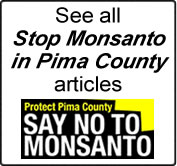Too Much Sodium Hiding in Your Diet?
To protect against high blood pressure, avoid processed and prepared foods, and emphasize whole foods that are naturally rich in potassium.
Ask the Nutritionist
 A: The dangers of sodium are very clear: Too much can raise blood pressure, and high blood pressure is the leading cause of death from heart disease and stroke in the United States, contributing to more than 1,000 deaths every day. Unfortunately, the average American adult consumes 3,400 mg of sodium daily, nearly 50 percent more than the 2,300 the federal government recommends. So we should hide all the salt shakers, right? Not so fast.
A: The dangers of sodium are very clear: Too much can raise blood pressure, and high blood pressure is the leading cause of death from heart disease and stroke in the United States, contributing to more than 1,000 deaths every day. Unfortunately, the average American adult consumes 3,400 mg of sodium daily, nearly 50 percent more than the 2,300 the federal government recommends. So we should hide all the salt shakers, right? Not so fast.
According to the Centers for Disease Control and Prevention (CDC), more than 70 percent of that sodium is already present in food before it reaches the table. And some of the leading culprits may surprise you. Bread and rolls are stealth contributors in our diet. Sandwiches, cold cuts, cured meats, pizza, soup, and some types of chicken (injected with a salty solution) comprise the American Heart Association’s Salty Six list. So even if you aren’t reaching for the salt at every meal, you’re likely getting more sodium than you need.
“While the majority of Americans report watching or trying to reduce added salt in their diets, the deck has been stacked against them,” the Food and Drug Administration (FDA) said in a statement last year. “The majority of sodium intake comes from processed and prepared foods, not the salt shaker.”
The Potassium-to-Sodium Ratio
But if you’re focused on sodium alone, you’ve learned only part of the story. The other part involves potassium, a mineral that naturally balances the metabolic action of sodium in the body. Human beings evolved on foods that were high in potassium and low in sodium, and the ratio between potassium and sodium in the diet is a crucial but greatly overlooked factor in human health.
A diet consisting exclusively of natural foods caused the human body to become adept at quickly getting rid of potassium while retaining sodium-and that design continues today. Unfortunately, modern processing and preserving techniques have reversed the all-important potassium-to-sodium ratio in our foods: as the same food goes through several processing steps, it loses potassium and gains sodium, so that its potassium-to-sodium ratio (also known as the K factor) falls dramatically. Research shows that a diet that is low in potassium and high in sodium is associated with an increased risk for high blood pressure, cardiovascular disease, stroke, and early death.
Some people, such as athletes, vegetarians, individuals who live in hot climates or high elevations, or those who have weak adrenal gland function, may have higher sodium needs than others. But most Americans can benefit from restricting refined salt in their diets, while simultaneously increasing their potassium intake.
The good news is that a wide variety of natural, whole foods contain the potassium-to-sodium ratios that worked so well for our ancestors. High-potassium, low-sodium foods aren’t limited to fruits like bananas. In fact, with the exception of a few kinds of shellfish, virtually all unprocessed plant and animal foods contain more potassium than sodium.
So the answer to the sodium dilemma is the same as the answer to so many of our modern health problems: avoid processed and packaged foods as much as possible, and focus your diet on fresh fruits and vegetables and unprocessed, grass-fed or organic meats and poultry. This simple change can drastically reduce the amount of sodium in your diet, and help you live a longer, healthier life.
Did You Know?
Slashing the average sodium intake by as little as 400 mg a day could prevent 32,000 heart attacks and 20,000 strokes annually, according to CDC Director Thomas Frieden, MD.
________________________
Potassium to Sodium Ratio Food Chart
The potassium and sodium content of foods changes dramatically as foods are processed. Notice how all of the following foods in their natural form are low-sodium foods because they contain less than 140 mg of sodium per serving. They also have more potassium to sodium (or a higher K-to-Na ratio). Once these foods are changed into other forms, however, their potassium-to-sodium ratio reverses.
| POTASSIUM | SODIUM | K-to-Na Ratio | |
| Apple (100 g) | 152 mg | 1 mg | 150.00 [150:1] |
| Apple pie (100 g) | 80 mg | 301 mg | .27 [1:3.7] |
| Cabbage (100 g) | 233 mg | 20 mg | 12.00 [12:1] |
| Canned sauerkraut (100 g) | 140 mg | 747 mg | .19 [1:5.3] |
| Cucumber (100 g) | 160 mg | 6 mg | 27.00 [27:1] |
| Dill pickles (100 g) | 200 mg | 1428 mg | .14 [1:7.2] |
| Cooked kidney beans (100 g) | 340 mg | 3mg | 110.0 [110:1] |
| Canned kidney beans (100 g) | 264 mg | 300 mg | .88 [1:1.13] |
| Fresh ground beef (100 g) | 270 mg | 60 mg | 4.5 [4.5:1] |
| McDonald’s hamburger (102 g) | 142 mg | 490 mg | .27 [1:3.7] |
| Low-salt tuna in water (184 g) | 487 mg | 72 mg | 6.8 [6.8:1] |
| Regular tuna in water (184 g) | 487 mg | 865 mg | .56 [1:1.7] |
(Source: The High Blood Pressure Solution: Natural Prevention and Cure With the K Factor by Richard D. Moore, MD, PhD)

You must be logged in to post a comment.